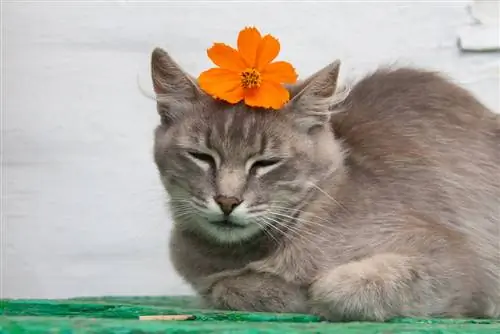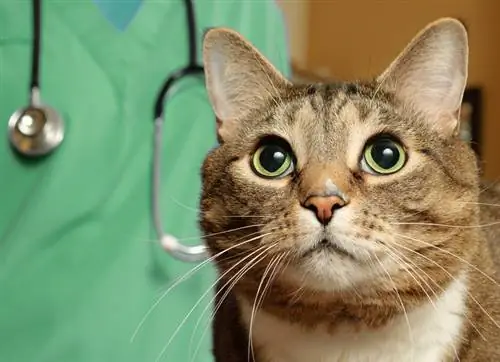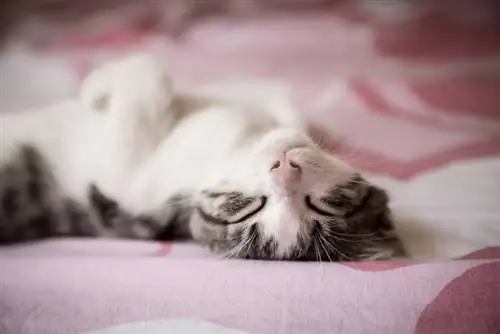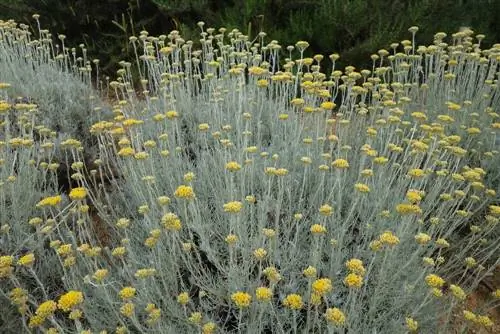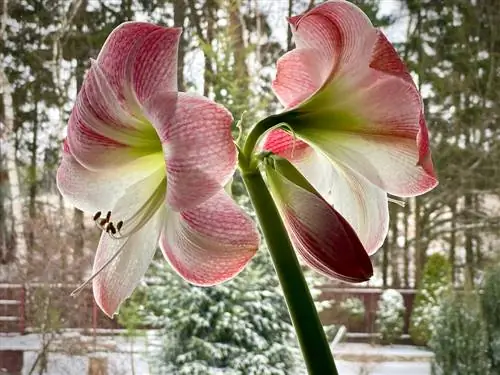- Author admin [email protected].
- Public 2023-12-16 16:46.
- Last modified 2025-01-23 11:22.
The decorative basket (Cosmos bipinnatus), also known as cosmea or cosmea, is an easy-care and popular summer flower that can be wonderfully combined with many other garden plants. But be careful: many ornamental plants are poisonous to people and pets. Does this also apply to the Cosmea?
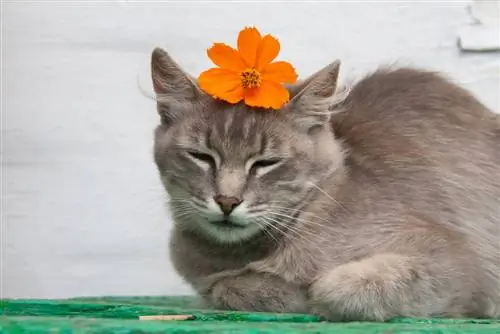
Is cosmea poisonous to cats?
The Cosmea (Cosmos bipinnatus) is completely non-toxic to cats and therefore poses no danger to the animals. It is ideal for a cat-friendly garden and is even edible, which also makes it attractive to humans.
Is cosmea poisonous to cats?
You can rest assured: All parts of the Cosmea plant are non-toxic to humans and animals. The decorative basket is therefore very suitable for a cat and child-friendly garden and you don't have to worry if your cat nibbles on the pretty basket flowers.
Which ornamental plants belong in a cat-friendly garden?
If you love cats as well as plants and want to plant your garden or balcony, you should use cat-friendly species. The curious velvet paws like to nibble on many plants, which can quickly become dangerous with poisonous flowers or trees. Therefore, to avoid poisoning, rely on:
- Dahlia (Dahlia): popular autumn-blooming bulbous flower, great variety
- Verbena (Verbena officinalis): great flower, undemanding to care for, for sunny, warm locations
- Bellflower (Campanula): many varieties with pretty flowers, uncomplicated care, long flowering period, for sunny to partially shaded locations
- Jacob's Ladder (Polemonium caeruleum): small, purple flowers, for partially shaded locations with fresh soil
- Catnip (Nepeta cataria): in many colors, intense scent, for sunny to full sun locations
- Lavender (Lavandula angustifolia): pretty blue or purple flowers, intense scent, for sunny and dry locations
- Girl's eye (Coreopsis): attractive flowers, for warm and full sun locations with nutrient-rich soil
- Marguerite (Leucanthemum): attractive basket flowers, for sunny to bright locations
- Sage (Salvia): not only as a spice plant, many lush flowering varieties, for sunny and dry locations
Also many native trees, in addition to apple and pear trees, etc.a. Pipe bush, crab bush, forsythia, hazelnut, serviceberry, cornelian cherry, dogwood or whitebeam are harmless to cats. As an additional plus point, the plants mentioned are considered bee and butterfly friendly, as they provide the buzzing colony with plenty of food in the form of nectar and pollen.
Which garden plants are particularly dangerous for cats?
But be careful: Many other popular ornamental plants for the garden or pots are poisonous and should therefore be kept away, especially from young, inexperienced cats. This applies in particular to:
- Yellow daffodil (Narcissus pseudonarcissus): also daffodil, can cause cramps, cardiac arrhythmias and colic
- Hyacinths (Hyacinthus): contains, among other things. saponin, calcium oxalate, salicylic acid; can cause stomach cramps, diarrhea and vomiting, especially the flowers are poisonous
- Lily of the valley (Convallaria majalis): can cause symptoms of poisoning including cardiac arrhythmias and cardiac arrest
- Snowdrops (Galanthus): toxins they contain can cause diarrhea and vomiting
- Tulips (Tulipa): contains toxins tuliposides and tulipin, which cause abdominal cramps and intestinal irritation
Tip
Cosmea is edible
In fact, the cosmea is not only non-toxic, but even edible. Their colorful flowers can be used as an edible decoration for salads or desserts. They are also very good as flower butter or in ice cubes.
Is cosmea poisonous to cats?
- Cosmea is non-toxic and even edible.
- Completely safe for cats and people.
- Ideal for cat-friendly garden.
- However, under no circumstances should you plant daffodils, lilies of the valley, tulips, snowdrops or hyacinths!

